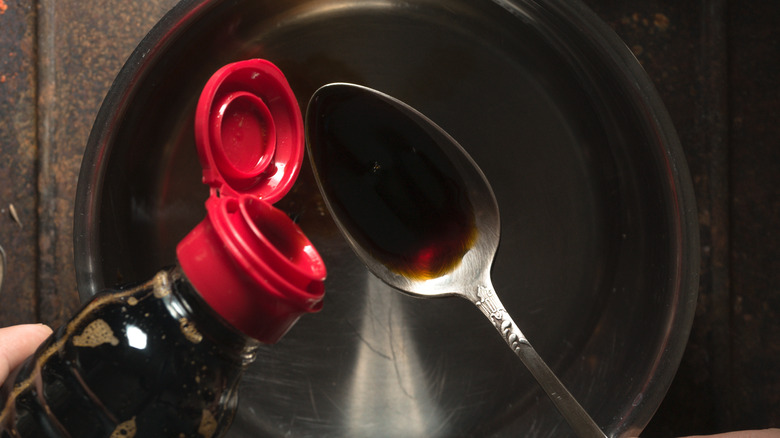The Real Reason Soy Sauce Contains Alcohol
Your favorite condiment to pair alongside sushi, sashimi, or white rice could be hiding a few tricks up its sleeve. According to Healthline, soy sauce, a liquid made from fermented soybeans and wheat, has been gracing tables for the last 1,000 years. This base for your favorite teriyaki sauce contains more elements than you may think, though. To many's surprise, Gluten-Free Living confirms that most soy sauces actually contain gluten, which is due to the wheat content in the ingredients.
However, in addition to gluten, there could be another unexpected ingredient hiding in your soy sauce bottle — it may surprise you to learn that soy sauce contains traces of alcohol, according to UAE's National News. In fact, the UAE actually banned Japanese Kikkoman soy sauce because of the product's alcohol content. So, how did this traditional Japanese condiment become so boozy? The answer lies in the sauce's creation process.
How did alcohol end up in soy sauce?
What do wine, beer, and soy sauce all have in common? They're all fermented liquids. Alcoholic fermentation is caused when available yeasts or sugars convert into ethanol, carbon dioxide, and other metabolic byproducts, according to Science Direct. While red or white wine's fermentation process converts grape sugar into alcohol, per Unusual Wines, soy sauce's fermentation process converts the yeast from the added wheat into sugar and then into alcohol. Many soy sauce brands, including Kikkoman, even advise their customers that their soy sauce does contain traces of alcohol — admitting that the alcohol contributes to their sauce's signature taste and aroma.
Before you start cutting soy sauce from your diet, it's important to note that most soy sauces only contain approximately 1.5% – 2% alcohol by volume (according to Kikkoman). Unlike wine or beer though, even the biggest soy sauce enthusiast is unlikely to swig soy sauce throughout the meal!

